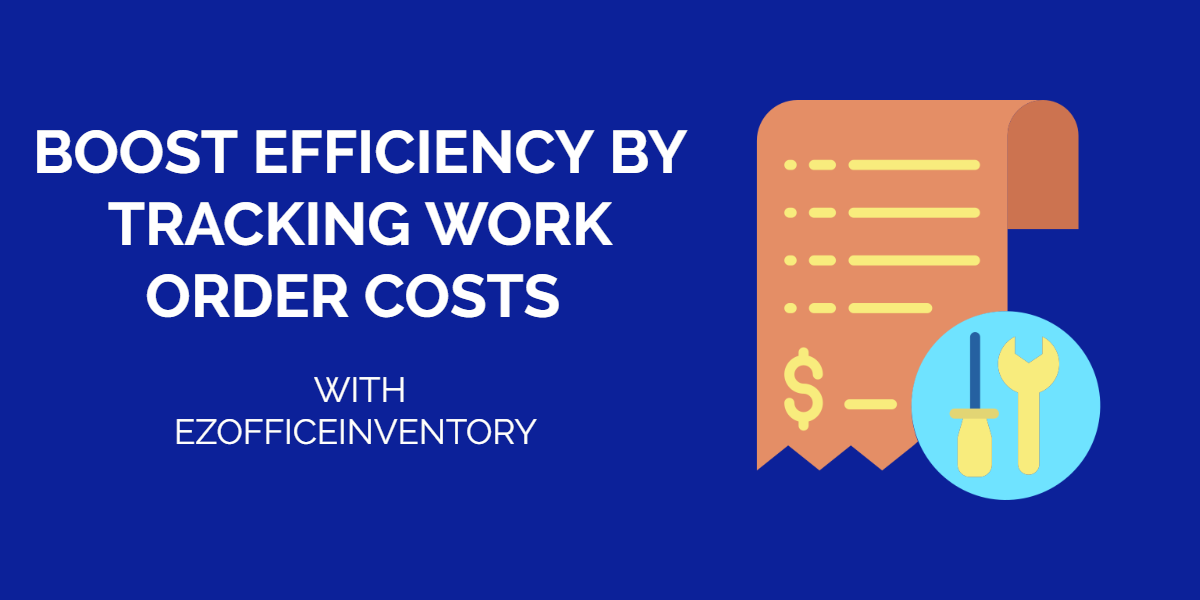Running multiple business Work Orders efficiently requires accurately tracking the associated costs. Given the diverse kinds of Work Orders created at organizations, tracking the cost associated can be time-consuming and also prone to errors. To eliminate such inefficiencies, EZOfficeInventory has launched a new feature to automate the calculation of Work Order Costs. Let’s talk in more detail about how to implement this feature:
Step 1: Enable Work Order Costs
First enable the Work Order module from Settings → Add Ons → Work Orders. Once you have enabled this setting, you will be able to select the option to track Work Order Costs.

Here you can choose whether you want to display costs of inventory consumed and labor costs on all your Work Orders. You also have the option to hide costs from staff users if you wish to.
Step 2: Choose a costing method
In order to track the cost of inventory consumed, you need to select a costing method for your consumables by going to Company Settings → Costing and Valuation Methods.
You can choose methods for assets, asset stock and inventory.

Note: Once a costing method has been selected and a Work Order created, the costing method for that Work Order will not be updated even if you change the settings. The new costing method will be applied to the Work Order created after the method was activated.
Step 3: Create a Work Order
Start by creating a new Work Order, Navigation Menu → Work Orders → Add Work Order.

There are two types of Work Orders to choose from, either a Maintenance or a General Work Order. To read more about how to create a Work Order click here.
3.1 Maintenance Work Order Costs
When creating a maintenance Work Order, select the relevant asset and inventory associated with the Work Order. Once you have created the Work Order, you will be able to see the two types of costs in the Details Tab. You can now start your Work Order from the top right corner of the page.

In total there are four types of costs that can be displayed for a maintenance Work Order.
- Base Cost: Cost that is added while creating the Work Order.
- Consumed Inventory: Costs incurred by consumption of inventory in the Work Order.
- Cost of Work: Cost associated with number of labor hours.
- Service cost: Cost of item service associated with the Work Order.

In order to add a service cost, go to the Items tab in the Work Order.
Click on the Asset displayed in the Items tab and complete its service session.

This will pop up an overlay asking you to enter the service costs. You can also add associated Inventory consumed within the service process.

If you want to edit service costs for any item, you can do it from the Details Page. Make sure you have enabled this from Settings → Service Edit and Deletion.

Then go to the details page of the asset linked to the Work Order and click Services. Here you will be able to edit the service costs.

Sometimes companies want to record the work hours spent on a Work Order. To estimate such costs you can add Work Logs.

You can add the number of hours spent and the cost per hour to complete the Cost of Work. There is also on option to add associated assets.

Once all costs are added, you will be able to view them in the Details tab of the Work Order.

Consequently, you can also view all linked inventory items under the Linked Inventory tab:

You can also check for what purpose is the inventory added to the Work Order by hovering over the question mark.
Read more: Maintenance Work Order Best Practices
3.2 General Work Order Costs
The General Work Order is different from a Maintenance Work Order as it displays only two types of costs.

Step 4: Enable Work Order Cost Listing
With the new feature enhancement, you can also change the way you view all Work Orders. Go to the Navigation Menu → Work Orders. From here click the Edit button.

An overlay will appear asking you to fill the required columns for the Listing page. You can enter the types of costs you want to display.

Step 5: Work Order Cost Print Template
The Work Order printout template will also display the relevant cost information. Go to Navigation Menu → Printout Templates. Design and save your template under the Work Order tab.


Open up the Work Order details page and click on More → Print Work Order. An overlay will appear asking you to choose the relevant print template.
The Work Order print out will show all the costs listed on the Details page.

Step 6: Run Work Order Cost Report
All Work Order reports display columns for costs tracked as well as Total Cost. From the Navigation Menu, go to Reports and Run the Work Orders Report. This report will show the following cost columns:

Similarly, the Linked Inventory report shows a column for cost associated with relevant Work Orders.
Note: This column will only be visible if you have enabled track cost of consumed inventory.

Lastly the Work Log Report also shows a work cost column to display the labor cost for a Work Order.
Step 7: Set up Dashboard KPIs
For instant access to Work Order Costs, you can add a Dashboard widget to for Total Cost of Completed Work Orders or Total Cost of In Progress Work Orders within a specified time range.

About EZOfficeInventory
EZOfficeInventory is a leading asset tracking software. It allows you to track, maintain, and report on inventory from anywhere, at any time. We offer a free 15-day trial – no credit card required!







